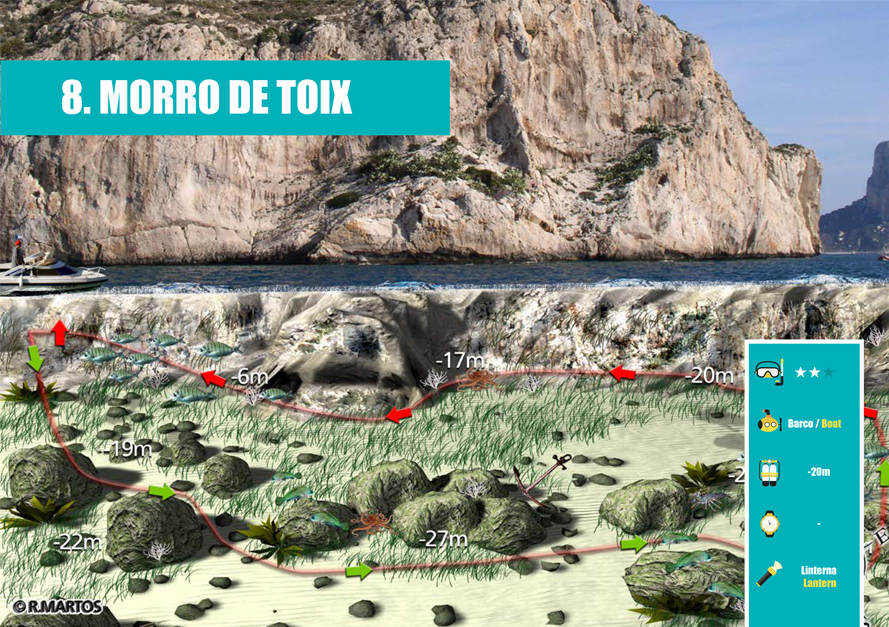
Shortly after passing Cape Toix we enter what is known as Mascarat.
The dive will be made in this beautiful environment, anchoring the boat either before turning the cape or shortly after, depending on the current or preference. If we do it while turning, we will anchor at a depth of about -20mts. After descending the cape and identifying the starting point on the wall, we will gain some depth and advance parallel to the wall on an approximate SE course, progressively increasing the depth as we approach the point.
At first the sandy bottom is dotted with small stones, which become larger as we gain depth, finally appearing in the form of large blocks of rock in the form of submerged islets, rocks that we can scrutinise in search of the usual lobsters and sea cicadas, as well as moray eels and conger eels, all species typical of rocky substrates. And in the transition zone between sand and rock, perhaps the colourful and eye-catching cnidarian known as Cribrinopsis crassa.
On the way back, we will reduce the depth and for this we will stick to the wall, often covered with yellow encrusting anemone and where we frequently encounter octopuses and the tiny nudibranchs and flatworms. In some sections, the gently sloping wall will allow us to make a comfortable and entertaining reduction of the excess nitrogen.


